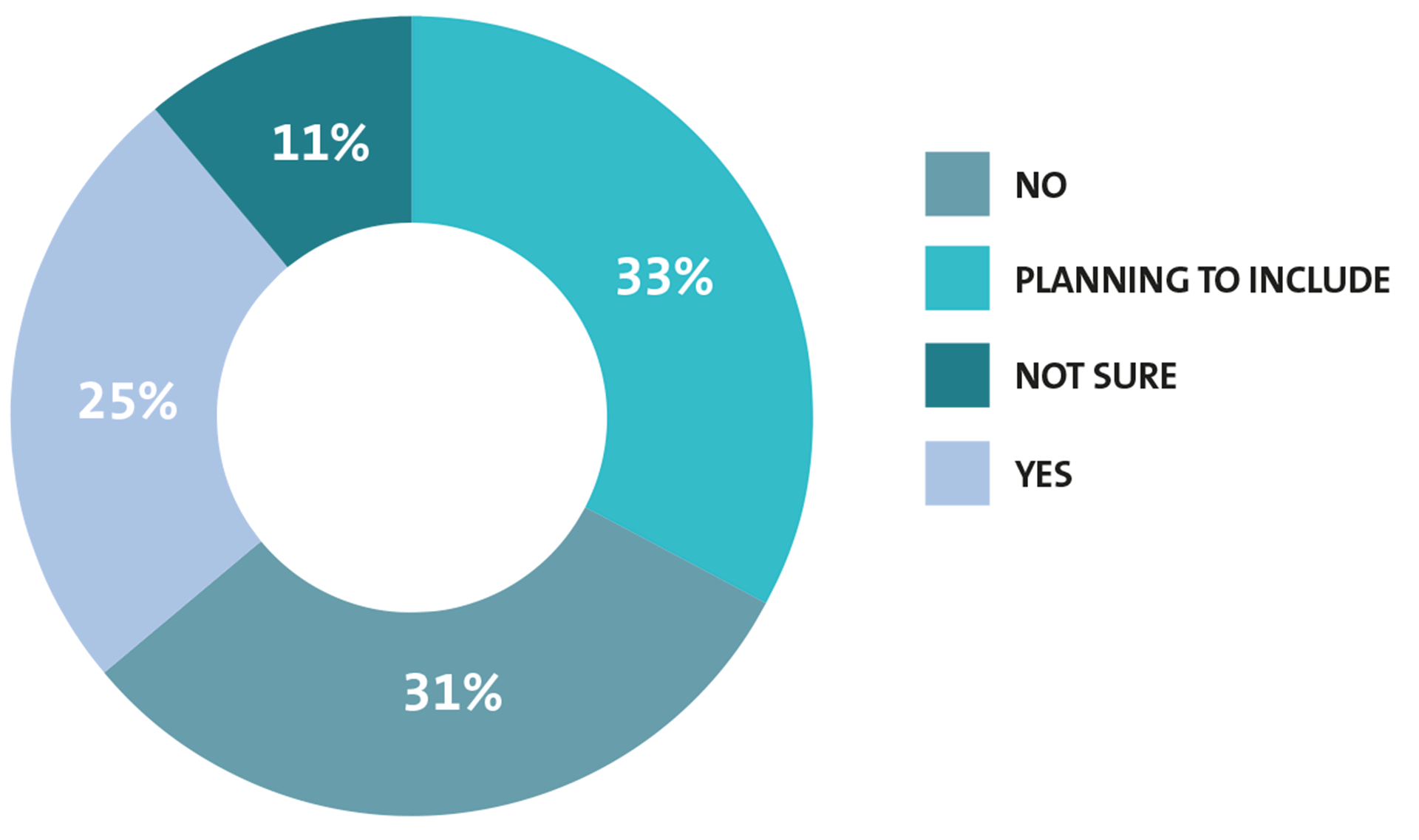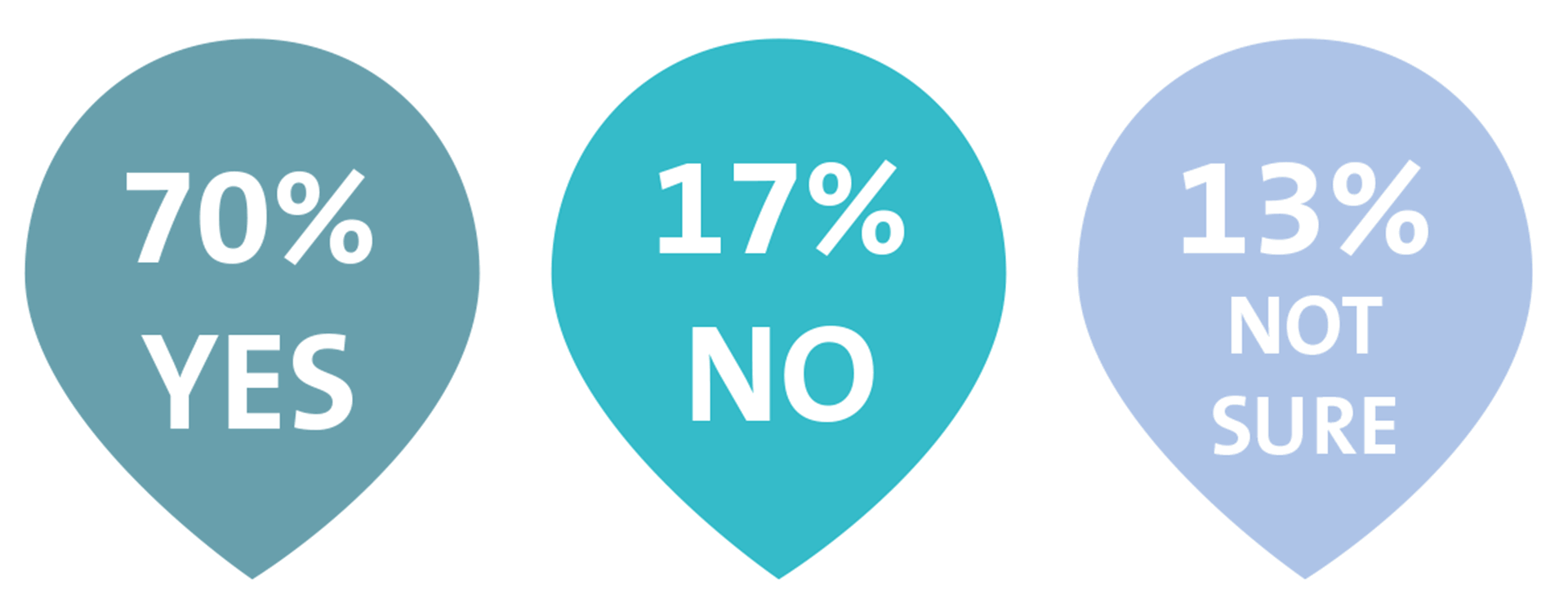

- Eleanor Hill
- Editorial Consultant, Treasury Management International (TMI)

- Helen Kelly
- Managing Director, Head of Europe, Barclays
Environmental, social and governance (ESG) initiatives are now a boardroom priority – and an increasingly important part of the treasurer’s strategic remit. Nevertheless, only a quarter of treasury departments currently have key performance indicators relating to ESG. Helen Kelly, Head of Europe, Barclays Corporate Banking, examines the types of ESG initiatives and targets leading treasury teams are implementing and highlights the critical role of diversity and inclusion within a modern, sustainable treasury function.
“The goal of measurement is to not only do things right; but do the right things – and continuously improve by doing that.” This quote from Pearl Zhu, a digital visionary, corporate innovator and author, encapsulates the essence of key performance indicators (KPIs). These measures are designed to drive an organisation to consistently achieve goals, and strive to ‘do better’, which in many ways is also the aim of ESG initiatives.
While treasurers are used to setting and achieving KPIs, ranging from forecast accuracy to retrospective hedge effectiveness, ESG-specific KPIs (often called Sustainability Performance Targets or SPTs) are a new concept for many treasury professionals. In fact, according to the recently released TMI and Barclays’ European Corporate Treasury Survey 2021, only 25% of European treasury functions currently have SPTs in place (see fig.1). Of the 225 respondents to the survey, 33% are planning to include ESG measures in their treasury objectives in the near future.
Fig 1: Are sustainability/ESG measures reflected in your organisation’s treasury/finance objectives?

Driving ESG KPIs
To understand how best to implement SPTs within treasury, it is first important to examine the drivers behind the rise of ESG within the department, and the wider organisation. Kelly explains: “Over the past 12 months, ESG has become a true boardroom imperative. Looking back to 2020, ESG was a theme that was lingering on the fringes of the board’s attention – but the Covid-19 pandemic catalysed an intense focus on communities and social challenges, as well as global supply chains, and supplier relationships and values. As such ESG is now front and centre for boards [see fig. 2] and this trend will only accelerate as we head into 2022.”
With this focus from the top on ESG and D&I, and treasury’s growing role as a strategic adviser to the board, treasury teams can no longer leave matters to ‘the sustainability department’ or ‘HR’. Says Kelly: “There is no room for passing the buck any more. Treasury teams are now expected to step up to proactively support the wider organisation’s ESG and D&I goals.”
Fig 2: Is ESG/Sustainability a board-level priority in your organisation?

There are many ways for treasury to achieve this support, Kelly explains. “In the early days of ESG, around a decade ago, green bonds and green loans were really the only options open to treasurers. This led to ESG being appropriate for only a handful of treasuries. But today, treasurers have a growing set of ESG solutions at their fingertips.”
These solutions include:
In addition to the above, traditional green bonds and green revolving credit facilities (RCFs) also remain popular. And banks such as Barclays continue to innovate in the ESG space, examining additional practical solutions for clients in areas such as sustainable payments and green trade finance.
Treasury can also exert its influence through its choice of business partners – and, of course, through its talent selection by taking D&I into account. “Requests for proposal [RFPs] are increasingly featuring questions around the bank’s commitment to ESG and D&I,” says Kelly. “We’re proud to have a huge commitment to these topics, as demonstrated by our work to tackle some of the biggest challenges our society is facing today.”
Box 1 - Defining ESG: goals and influence
The terms ‘ESG’ and ‘sustainability’ are often used interchangeably, although there are nuances. The important point is that both terms relate to the minimisation of risks arising from environmental, social and governance aspects – as well as the proactive search for opportunities to improve the organisation’s long-term viability [1].
It is best practice for the three aspects of ESG to be considered in combination, rather than in ‘E’, ‘S’ and ‘G’ siloes. After all, there is a significant interplay between these elements and best practice dictates a holistic approach.
Setting ESG KPIs for treasury
With the ways in which treasury can contribute to ESG defined, it is possible to look at potential KPIs. These will, of course, vary from company to company – and all ESG activity within treasury must align with that of the wider corporation, and ideally with the UN’s Sustainable Development Goals (SDGs). “Within treasury, sustainability works best when there is a specific ESG policy for the treasury team, built in conjunction with the rest of the organisation. This enables treasury to play its part, but also be on the same page as the C-suite. Having a standardised approach to ESG across geographies and treasury centres is also critical,” says Kelly.
KPIs and/or targets can assist in this standardisation and centralisation drive. Some examples of ESG- and D&I-related measures that treasuries may wish to consider include:
Naturally, it will take work to define these targets. Treasurers will need to collaborate with internal and external partners to find the right goals and ensure they are adhering to industry best practice and guidelines. “It’s also important to ensure that these are genuine, rigorous and measurable targets to mitigate the risk of ‘greenwashing’,” cautions Kelly.
Sustainability reporting
Another area awaiting treasurers’ attention is ESG disclosures and sustainability reporting – whether mandatory or voluntary. Kelly elaborates: “While non-financial reporting might appear to be outside of the treasurer’s traditional remit, in fact we are seeing leading finance functions playing a vital role in the communication of sustainability-related information to stakeholders and the market. CFOs are particularly focused on enabling stakeholders to make the decisions that matter to them, and ESG reporting is central to that goal.”
The growing importance of ESG reporting is borne out by the TMI and Barclays’ survey results, with 14% of participants choosing this as their primary regulatory concern for 2021. To put this into context, 14% also chose AML/KYC as their top regulatory challenge.
Although sustainability reporting is still evolving, learning about the initiatives happening in the market can give treasurers an edge. These frameworks, standards, and directives include:
There are many more initiatives happening across the globe and much progress still to be made among standard setters and regulators. But in a world where transparency and data are critical to building trust and recognition around a corporation’s ESG commitments, treasurers cannot afford to turn a blind eye to sustainability reporting. “As such, it is worth having early conversations with banks, vendors, and third-party sustainability experts, around the ways in which treasury can proactively participate in sustainability reporting,” suggests Kelly.
BOX 2 - Diversity and inclusion: no longer sidelined
Under the ESG umbrella, it is also important to consider diversity and inclusion (D&I). The business case for D&I has never been stronger: companies that have embraced gender and ethnic diversity are significantly outperforming those which have not. [2] And, again, the Covid-19 pandemic has intensified consumer and stakeholder focus on the desire for companies to embrace D&I – it is swiftly becoming a business essential.
Unlocking hidden value
It may seem as though treasury has a long to-do list when it comes to ESG. While there are areas that will require attention from treasury leaders, many of the solutions are, in fact, relatively simple to implement. And the benefits are not to be scoffed at.
“As finance professionals, we often talk about the concrete benefits of embracing ESG and D&I. The numbers speak volumes – and we do love numbers! But at the end of the day, we are all human beings too, and the softer benefits to embracing sustainability initiatives are potentially some of the most interesting, and rewarding,” comments Kelly.
For example, a Mercer study found that ESG performance can help companies both improve employee satisfaction and attract prospective employees [4]. Additional research from Mercer provided evidence that satisfied employees work harder, stay longer with their employers, and seek to produce better results for the organisation. What’s more, the research showed that enthusiastic prospective employees strengthen a company’s talent pipeline and ensure the availability of crucial human capital.
“Other soft benefits we’ve seen at Barclays are people learning new skills through volunteer days with outside organisations. Days away from the desk helping out at a charity, for example, can also be great for team bonding – and a day outside the office also often boosts productivity,” comments Kelly.
“There really is no downside to ESG and D&I if you’re committed to it and enact your beliefs. There is no longer the ‘cost’ or ‘difficulty’ factor associated with sustainability that there used to be. ESG-driven solutions are relatively easy to access and could cost less or the same as the traditional alternative.”
Arguably, the biggest ESG risk is failing to understand how critical sustainability is to the future of business – and not building it into the heart of what the treasury function does. Companies may find themselves disadvantaged as buyers or suppliers if they no longer satisfy their counterparties’ ESG requirements. Likewise, support from banking partners, vendors, and consumers, may also fall away if ESG and D&I criteria are not met.
Kelly concludes: “It’s time for businesses, and treasurers, to start taking ESG and D&I as seriously as they do other business risks and opportunities. The potential downsides of not doing so can have a serious impact on people, profits and the planet. And yet there are significant upsides on offer for those who approach this topic with the level of commitment it truly deserves.”
BOX 3 - Walking the walk: ESG and D&I initiatives at Barclays
“There’s a lot of talk about ESG and D&I in many banking circles, but not always so much action. I’m genuinely proud of what we’re doing at Barclays to make a difference. Of course, we have all of the ambitions you would expect from a large financial institution, such as being a net-zero bank by 2050, and supporting £100bn in green financing by 2030. But we’re going way beyond targets to make a positive contribution to society and the environment,” comments Kelly.
A great example of this is Barclays’ £100m Covid-19 Community Aid Package. “Through this initiative we’re partnering with charities around the world that are delivering vital support in the communities where we live and work. We’re also matching colleagues’ donations and active fundraising efforts to the charities of their choice that are delivering Covid-19 relief efforts,” Kelly explains. “This is not just a bank talking about how to improve life in the community – this is us donating money to where we believe it will make a difference.”
Another similarly powerful project is the bank’s ‘Unreasonable Impact’ initiative. In partnership with Unreasonable Group, Barclays has launched a series of programmes held in select geographies across the world that encourage the scaling of growth-stage ventures. This will be achieved with resources, mentorship for entrepreneurs, and a global network of support to rapidly create jobs and address key global issues in the labour market. “Through this initiative, we are looking to transform global unemployment issues into opportunities to build new sustainable industries and spur the creation of thousands of jobs,” comments Kelly.
Elsewhere, Barclays is creating innovative tools to help measure, monitor and manage ESG-related targets. “Take carbon emissions, for example,” says Kelly. “We have created a methodology called BlueTrack™ for measuring our financed emissions and tracking them at a portfolio level against the goals of the Paris Agreement. BlueTrack™ also helps us to embed climate impact in our financing decisions. The information gleaned can be useful for clients too, as we use both internal and external data to make our decisions.”
Barclays also has numerous projects underway in areas including: climate change, human rights, the supply chain and diversity and inclusion. “The latter is a topic that is very close to my heart,” says Kelly. “As a senior female banker, I have, over the years, had first-hand experience of the challenges of working in an environment that is not diverse. Thankfully, now I’m lucky enough to work in an organisation which believes that diversity in our workforce makes Barclays a stronger business. To build and maintain that diversity, we need a culture that makes everyone feel included and supported, and provides equality of opportunity for talent at all levels to grow.”
The bank does this by focusing on five pillars:
“We are challenging ourselves to constantly do better across these pillars – we do not look at them in isolation. Ultimately, having colleagues with a mix of backgrounds and life experiences makes us better at supporting our customers, clients and communities. It promotes diversity of thought, encourages innovation and makes us more reflective of the individuals and businesses we serve,” Kelly concludes.
Barclays Bank Ireland PLC is registered in Ireland. Registered Office: One Molesworth Street, Dublin 2, Ireland D02 RF29. Registered Number: 396330. A list of names and personal details of every director of the company is available for inspection to the public at the company’s registered office for a nominal fee. Barclays Bank Ireland PLC is regulated by the Central Bank of Ireland.
This article is intended only for an audience in Europe. Where readers are present in the UK it is only intended for persons who have professional experience in matters relating to investments, and any investment or investment activity to referred to within it are available only to such persons.



